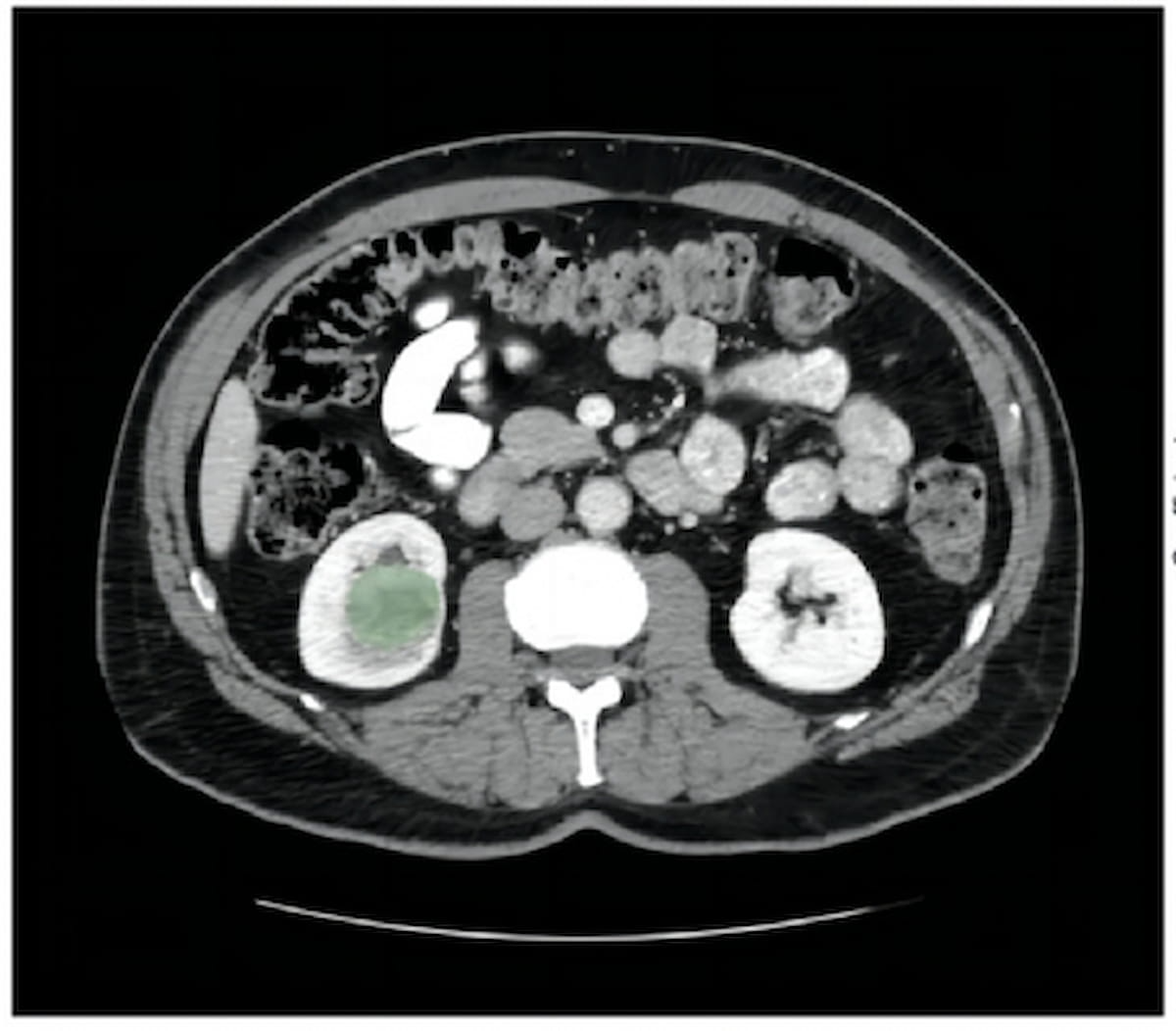Computed tomography (CT)-based radiomics may offer prognostic benefit in predicting increased Fork head box M1 (FOXM1) levels, a key factor that has been linked to the proliferation of renal cell carcinoma (RCC).
In a retrospective study, recently published in Academic Radiology, researchers reviewed data from 528 patients with clear cell renal cell carcinoma (ccRCC) in order to explore the prognostic impact of FOXM1 expression.
In a subsequent analysis of 184 patients from the cohort who had preoperative CT exams, the study authors developed a radiomics model (Rad-score) for FOXM1 expression in a training cohort of 129 patients and compared the Rad-score, TNM staging, a clinical model and a combined model that incorporated the Rad-score for the prediction of ccRCC prognosis in a validation cohort of 55 patients.
In their assessment of clinicopathological characteristics between groups with high FOXM1 expression and low FOXM1 expression, the researchers found that 35.4 percent of those with a high FOXM1 level had grade G4 ccRCC in comparison to 10.5 percent of those with low FOXM1 levels.
The study findings also revealed that 25.3 percent of patients with high FOXM1 levels had TNM stage I in comparison to 54.4 percent of those with low FOXM1 levels. Correspondingly, the study authors noted that 34.18 percent of the cohort with FOXM1 levels had TNM stage IV in contrast to 13.08 percent of patients with low FOXM1 levels.
“It was found that patients with high FOXM1 expression have significantly higher TNM stage and pathological grade, while there were no significant differences in sex and age,” wrote lead study author Jingwei Zhao, MM, who is affiliated with the Department of Diagnostic Radiology at the National Cancer Center and the National Clinical Research Center for Cancer with the Cancer Hospital at the Chinese Academy of Medical Sciences and Peking Union Medical College in Beijing, China, and colleagues.
Three Key Takeaways
- FOXM1 expression correlates with aggressive features. The study highlights a significant association between high FOXM1 expression levels and aggressive clinicopathological features in clear cell renal cell carcinoma (ccRCC), including higher TNM staging and pathological grade. This suggests that FOXM1 could serve as a prognostic indicator for ccRCC progression.
- Radiomics model shows promise in predicting FOXM1 expression. The development of a radiomics model (Rad-score) based on CT imaging features demonstrates potential in predicting FOXM1 expression levels in ccRCC. The model incorporates shape and texture features that may provide insights into tumor morphology and necrosis, possibly enhancing prognostic capabilities beyond conventional clinical parameters.
- Combined model improves prognostic accuracy. Integrating the radiomics Rad-score into a combined model improves the accuracy of prognostic predictions for ccRCC compared to using TNM staging or clinical models alone. This underscores the potential utility of incorporating radiomics-based assessments into clinical decision-making processes for formulating treatment strategies and evaluating disease aggressiveness in ccRCC patients.
The researchers noted that the Rad-score radiomics model incorporates a shape feature, which enables one to assess a potential link between increased sphericity and FOXM1 expression, and a texture feature that may provide insight into the proportion of necrosis within the tumor. The radiomics model had an area under the receiver operating characteristic (ROC) curve of 71.3 percent in the training cohort and an ROC curve of 71.1 percent in the validation cohort, according to the study.
In the validation cohort, the researchers also found that a combined model incorporating the radiomics Rad-score model had the highest C-index (74.5 percent) for predicting ccRRC prognosis in contrast to the Rad-score model alone (67 percent), TNM staging alone (71.2 percent) and a clinical model (73.6 percent).
“The successful prediction of FOXM1 expression in ccRCC patients based on radiomics has led to the establishment of a radiomics-based nomogram,” added Zhao and colleagues. “This tool aids clinicians in formulating treatment strategies, offering a non-invasive means to gauge the likely course and aggressiveness of the disease.”
(Editor’s note: For related content, see “Emerging PET/CT Agent May Enhance Diagnosis for Smaller Lesions of Clear Cell Renal Cell Carcinoma,” “New Research Shows Viability of PET Imaging Agent for Clear Cell Renal Cell Carcinoma” and “Emerging PET/CT Imaging Agent Shows Promise for Diagnosing Clear Cell Renal Cell Carcinoma.”)
Beyond the inherent limitations of a retrospective study, the authors noted that extrapolation of the results may be limited due to possible selection bias with the data sources for the study. They also emphasized that prospective research and larger cohorts are necessary to validate the prognostic capabilities of radiomics for patients with ccRCC.
